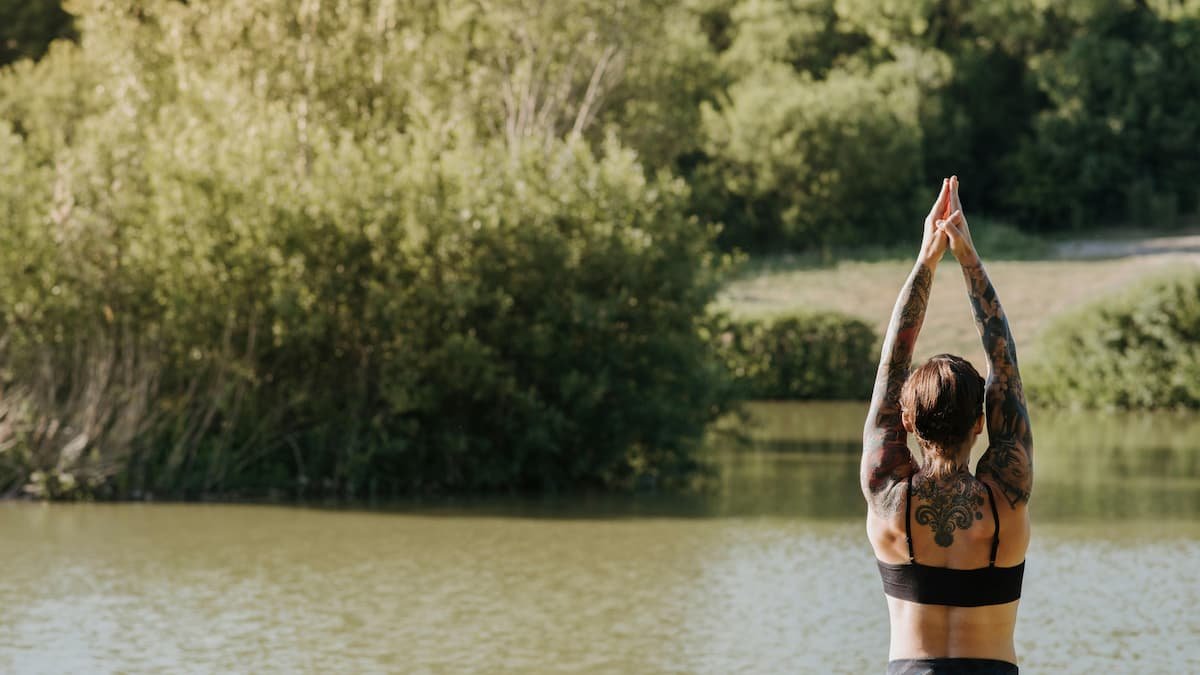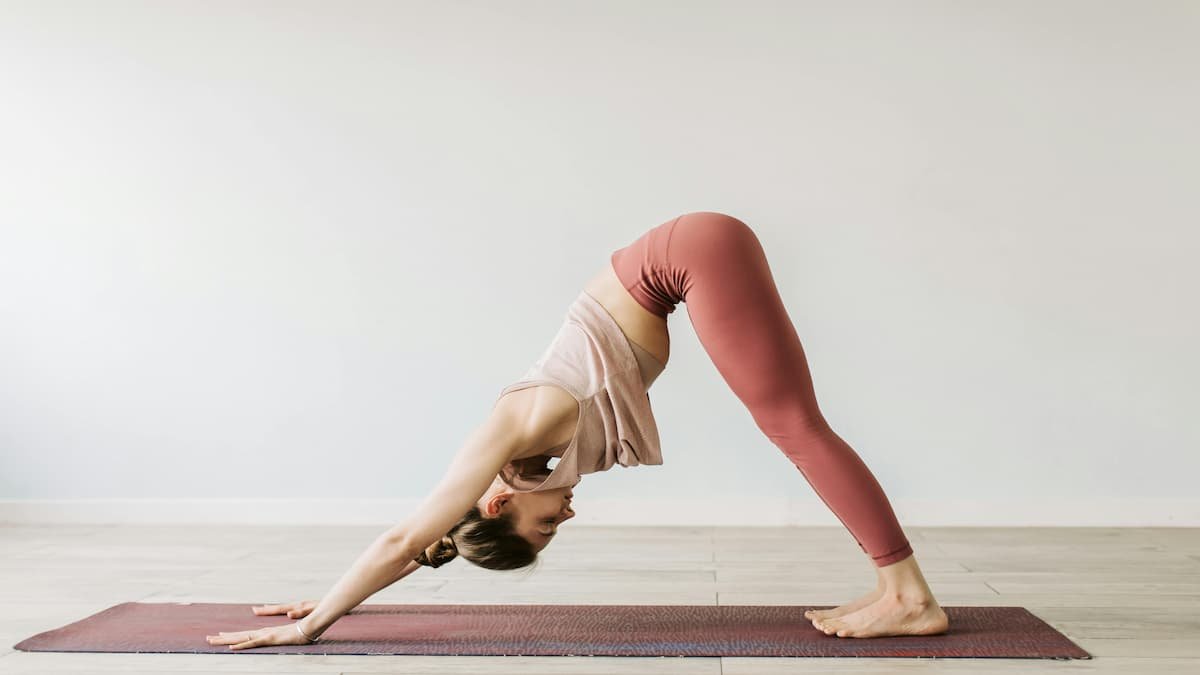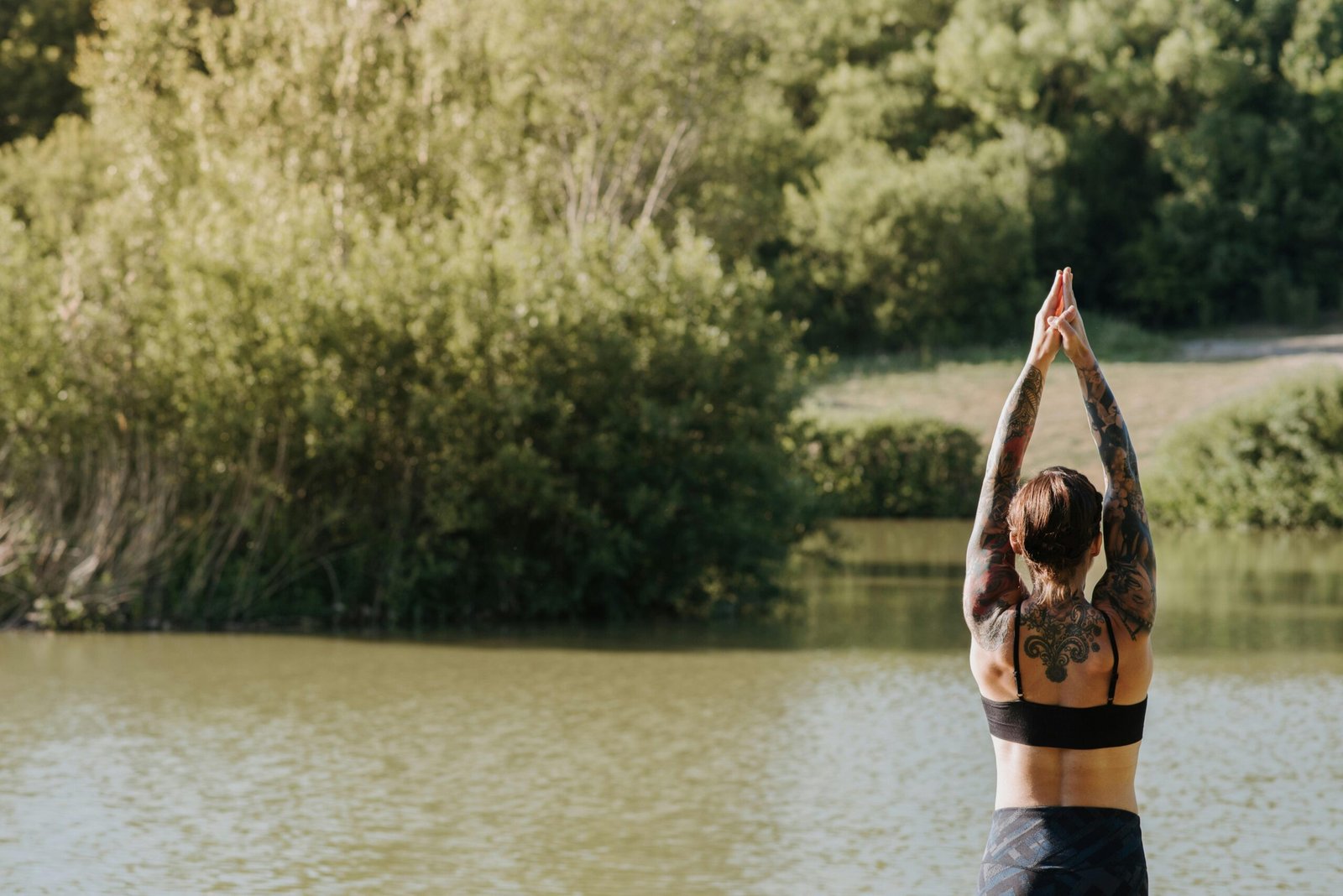In the world of yoga, the mountain pose, or Tadasana, holds a special place. It’s a foundational pose, often serving as the starting point for many other yoga postures.
Yet, its simplicity can be deceptive. Tadasana is more than just standing upright. It’s about grounding, balance, and alignment.
This pose engages major muscle groups, promoting overall strength. It also encourages proper alignment of the spine, improving posture.
But the benefits of the Tadasana extend beyond the physical. It can be a meditative practice, helping to focus the mind and calm the breath.
In this guide, we will explore the details of the mountain pose. We will look at its benefits and how to include it in your yoga practice.
Understanding Mountain Pose (Tadasana)
Tadasana Mountain pose is a basic yoga practice. In Sanskrit, “Tada” means mountain, reflecting the pose’s intention of stability and grounding.
It’s often underestimated due to its simplicity. However, the essence of this pose lies in its subtle demands for alignment and engagement.
The feet are firmly grounded, creating a solid base. Weight should be evenly distributed, promoting a sense of rootedness.
The spine aligns naturally, stretching upwards as if reaching towards the sky. This alignment fosters energy flow throughout the body, enhancing vitality.
While it might look static in a mountain pose yoga still image, Tadasana is dynamic. Muscles engage gently but continuously, supporting balance and posture.
By concentrating on these elements, practitioners can develop a deeper awareness of their body and breath. This creates a solid base for their yoga practice.
Step-by-Step Guide to Mountain Pose
Starting in Tadasana, focus on finding a comfortable Place. Stand tall with your feet hip-width apart and feel the ground beneath you.
Here is a stepwise guide to help you perform the pose correctly:
- Anchor Your Feet: Press evenly through the four corners of your feet. Imagine growing roots to stabilize yourself.
- Engage the Legs: Firm your thighs and lift the kneecaps slightly. Avoid locking your knees to maintain a gentle micro-bend.
- Align the Spine: Inhale deeply, elongating through the spine. Lift through the crown of your head, lengthening the neck.
- Open the Chest: Roll your shoulders back and down, drawing the shoulder blades towards each other. Open the chest gently.
- Position the Arms: Let the arms hang naturally by the sides or bring them together in front, palms facing each other.
- Breathe and Focus: Close your eyes if you feel steady. Take slow, deep breaths to cultivate mindfulness and presence.
Once settled, maintain this position for several breaths. Concentrate on each detail, ensuring alignment and balance. The key is to stay present, making subtle adjustments as needed. Practicing Tadasana in this way helps create a basis for more complex postures, enhancing your overall yoga experience.
The Benefits of Practicing Mountain Pose
Yoga mountain pose offers manay benefits for yoga practitioners, both physical and mental. This foundational stance improves posture by encouraging proper alignment of the spine. Practicing with awareness helps you stand taller and sit straighter.
Balance and stability are enhanced through Tadasana. By distributing your weight evenly, you build a solid base, which aids in developing better control in other poses. It also strengthens your legs and core, contributing to overall body strength.
Mentally, mountain pose promotes mindfulness and focus. As you focus on your breath and alignment, distractions fade away, allowing for a meditative state. This quiet focus can translate to calmer and more centered daily life.
Tadasana also reduces stress when paired with deep breathing. Through intentional practice, it gives sense of peace, grounding you firmly to the earth. This reduces tension and boosts relaxation.
Besides, Tadasana is easy to integrate into different routines, adaptable to any yoga level. It offers a chance to reconnect with simple yet effective grounding techniques, crucial for a balanced yoga practice.
Common Mistakes and How to Avoid Them
One common mistake in mountain pose is locking the knees. Locking them can lead to high blood pressure, increasing the risk of injury. Instead, keep a micro-bend in your knees to maintain a soft and stable stance.
Another error is tensing the shoulders, which can create unnecessary strain. Many practitioners inadvertently shrug, leading to tension. To avoid this, consciously relax your shoulders down and away from your ears.
Poor foot alignment is often overlooked. Misaligned feet can disrupt balance and posture. Ensure your feet are parallel, with weight spread evenly across the four corners of each foot.
Finally, neglecting to engage the core is a frequent oversight. Engaging your core supports the spine and enhances stability. Focus on drawing in your lower abdomen for an upright and balanced posture. By attending to these minute details, you can fully embrace the benefits of this powerful pose.
Modifications and Variations of Mountain Pose
Mountain pose is highly adaptable, accommodating various needs and abilities. For those with balance challenges, try practicing with your back against a wall. This provides additional support and helps maintain proper alignment.
If standing is difficult, consider chair yoga. Sitting near the edge of a chair allows you to replicate this pose experience. Ensure your feet stay flat on the ground to engage your muscles effectively.
For a more advanced variation, close your eyes while maintaining the pose. This increases balance difficulty, enhancing proprioception and focus. Engage in deep breathing to ground yourself more deeply in the pose.
Arm positions in Tadasana offer subtle variations. For example, raise your arms overhead to deepen the stretch and engage the shoulders. Experimenting with these modifications can provide a fresh perspective on this foundational posture.
Integrating Tadasana into Your Yoga Practice
Incorporating mountain pose into your yoga routine is straightforward. Start with Tadasana to set your intentions and focus. It creates a grounded beginning for any practice, helping you connect with your breath.
Use Tadasana as a transition between sequences. This pause allows you to realign your body and mind before moving forward. The simplicity of the pose provides a valuable moment of stillness amidst dynamic movements.
Consider ending your practice with mountain pose. This can center your energy and bring the session to a calm close. Holding the pose for several breaths encourages inner reflection.
Tadasana is versatile and can be practiced by itself. Use it throughout your day to reset and reconnect, even if you’re not on the mat. This integration fosters consistency, enhancing both your physical and mental yoga experience.
Mountain Pose Beyond the Yoga Mat
Mountain pose is not limited to the yoga studio. Its benefits can extend into daily life, offering many benefits. Practicing Tadasana at home or in the office can improve posture and awareness.
Incorporate it into your routine by standing in Tadasana while waiting in line. This simple act can reduce stress and promote relaxation. Focus on grounding your feet and aligning your spine.
Use mountain pose as a mindful break during your day. It’s an opportunity to reconnect with your breath and center your thoughts. Just a minute or two can enhance mental clarity.
Even outside yoga practice, tadasana creates a sense of stability and balance. Embrace its simplicity to bring calm and focus to any environment. The pose serves as a reminder to stay grounded amidst life’s hustle and bustle.
FAQs About Mountain Pose
Here are some frequently asked questions about mountain pose:
- What is the Sanskrit name for mountain pose?
- Tadasana. Tada means Mountain and Asana means a yoga pose.
- Can beginners practice mountain pose?
- Absolutely! It’s ideal for all levels. It is a simple pose and easy to master. So, it is a beginner-friendly pose only.
- How does mountain pose improve posture?
- It promotes proper spinal alignment. As a result your posture gets improved.
Tadasana is a versatile and foundational yoga posture. Its simplicity belies its profound benefits, making it popular among practitioners. Whether you’re just starting or refining your practice, Tadasana has something to offer everyone.
Conclusion
Mountain pose, or Tadasana, may appear deceptively simple at first glance. However, its power lies in its subtlety and profound effects. By integrating this foundational pose, you can cultivate a sense of stability and balance.
Whether you are an experienced yogi or a beginner, Tadasana offers valuable insights. This pose gives mindfulness, grounding you in the present moment. As you stand tall and rooted, you’ll find a deeper connection to your breath and body.
Incorporating Tadasana into your daily routine can transform more than just posture. It’s a gateway to mindfulness, inner strength, and resilience. Embrace its simplicity and discover the rich benefits it brings.



